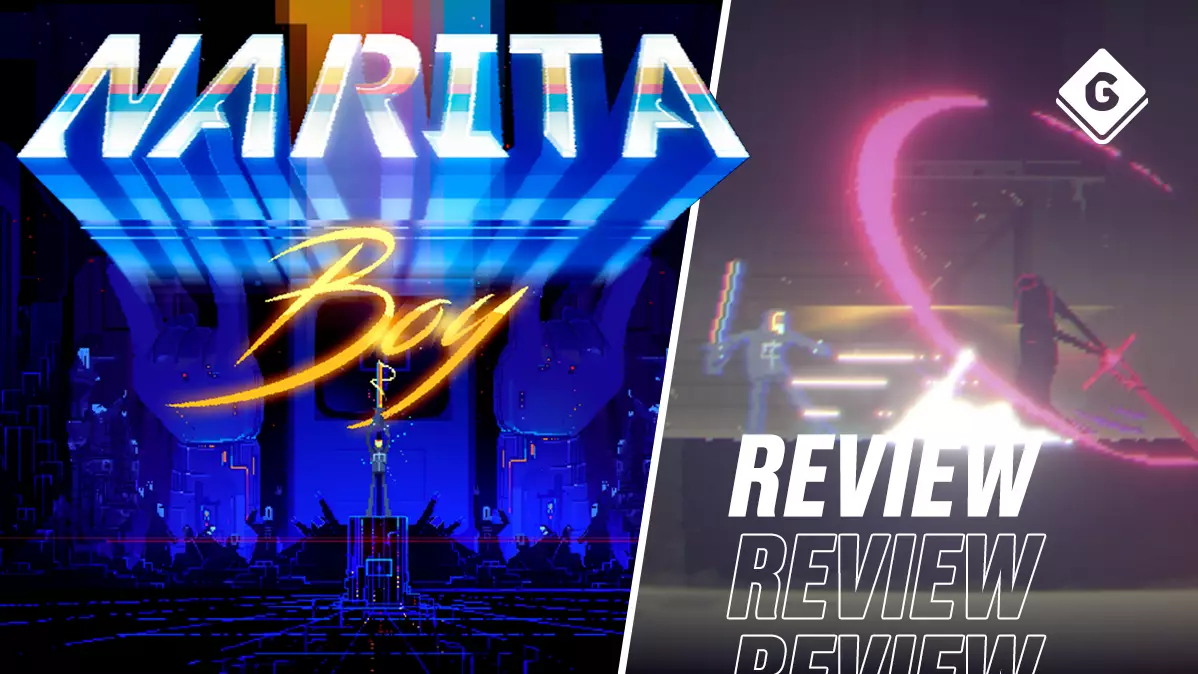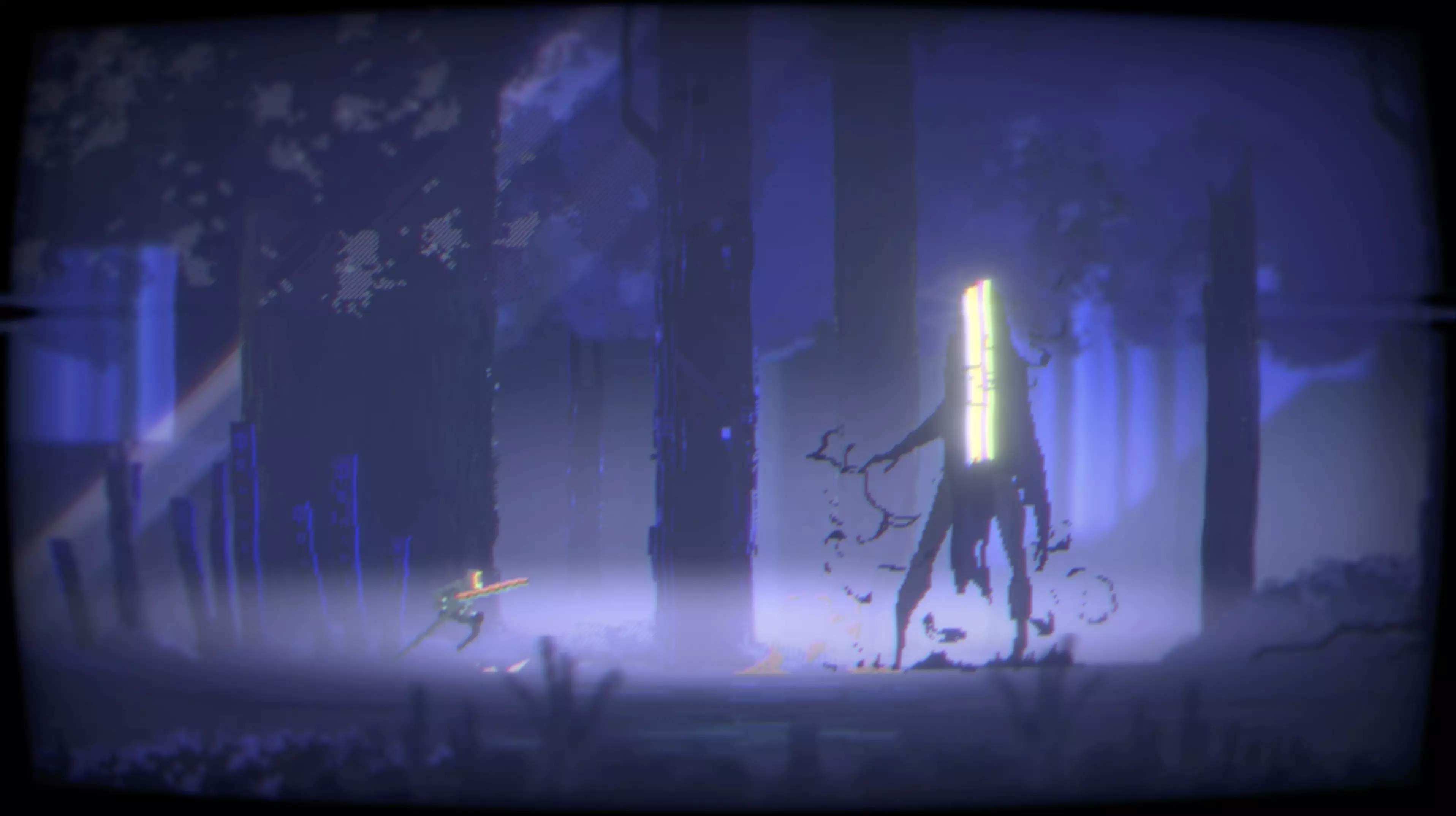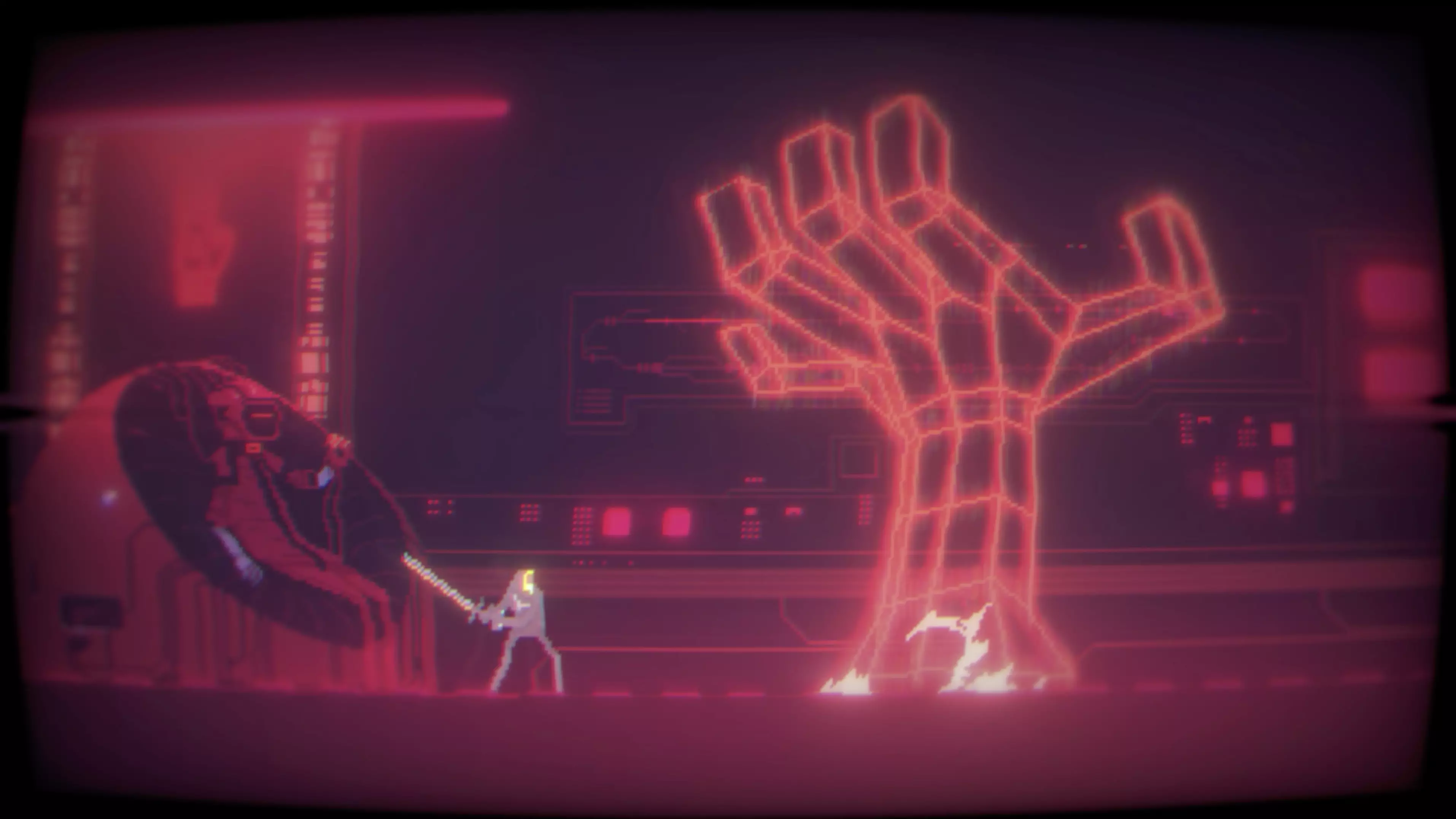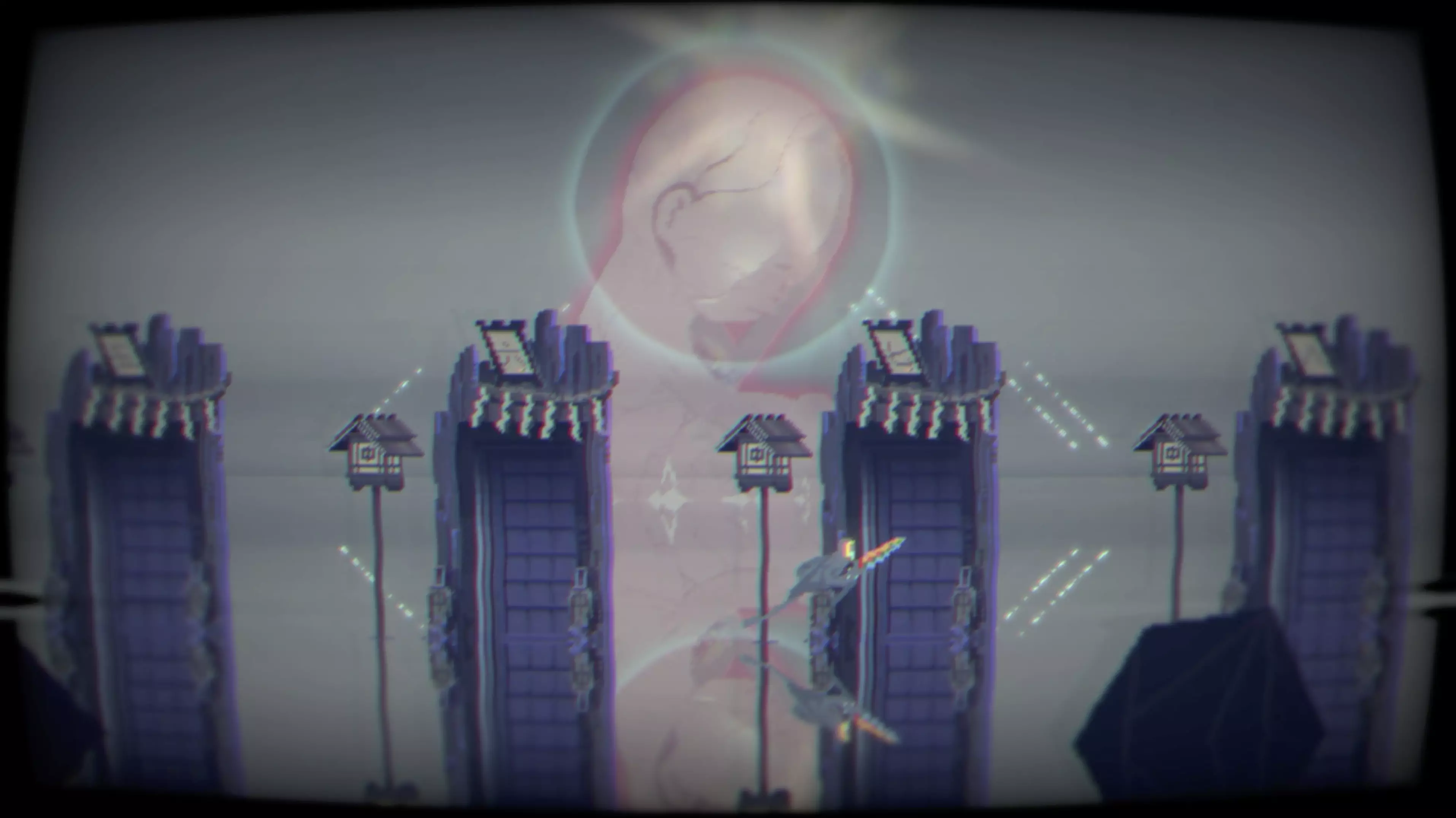
Narita Boy takes its sweet time in onboarding the player, trickling out power-ups, standard moves like dashes and barges, and powerful summons over the course of its first few hours. But once your character, the titular Narita Boy, is fully loaded with an arsenal of techno trickery, Barcelona-based Studio Koba's action-platformer becomes a symphony of pixel-perfect precision and audio-visual excellence, to brighten the screen time of any retro-leaning gamer.
Narita Boy began as a Kickstarter success, raising over 160,000 Euros for its makers. Now backed by British publisher Team17, it's coming to PC and all console platforms (including Xbox Game Pass, for those of you who love a 'free' treat). Tested on Nintendo Switch, it's excellent both docked and experienced handheld, with liquid-slick animation unaffected by any slowdown however busy the action becomes, and each and every enemy appearing before Narita Boy bearing a unique look, and singularly deadly attacks to match. Those silhouettes matter, as in the heat of battle with varied nasties you need to switch approaches swiftly, and sometimes the merest glance at an attacker is all you'll get.
More likely to reward players who exploit weaknesses and fight strategically, Narita Boy is no button-basher - progress through its dazzling setting, the Digital Kingdom, is easier if you exert a little caution, paying attention to your health and turning damage dealt into replenishing 'Load' power when necessary. Even the lowliest zombie-style opponent can slap chunks of health off you, if you're not smart with your dodging and timing; and enemy varieties can also come in different flavours of strength. Which isn't to say this is a punishing game, as such - generous checkpointing and quick restarts ensure that Narita Boy is a hard game to bounce off of, as momentum is fairly well maintained regardless of failures. Just don't come to this expecting to decimate every evil on your first try.
Advert
Because, there's a lot of evil out there, to be struck down. And it's worth focussing on that elimination of demanding bosses, rather than spending too long getting your head around why you're doing it. While Narita Boy looks terrific, and its music is suitably synthwave-ish in style, its storyline does get rather bogged down in retro-futurist techno-babble. Long story, short: a gamer in the 1980s is sucked into their Narita One computer when the maker of their favourite game (also called Narita Boy) is robbed of his memories by an in-game villain. The baddies, collectively known as the Stallions, want to corrupt the Digital Kingdom; and you, as the 'real' Narita Boy foretold by legend, are here to both stop that and save the game's creator.

Cue: plenty of pun-based names alongside a raft of go here, do that, kill this thing instructions from a hefty array of NPCs who kind of blur together, after a while. (Okay, the bulldozer-sized mechanical toad, aside.) At least where you are makes for more memorable adventuring. Environments can vary, fantastically - while you're in a virtual world, forests and deserts alike both feel very evocative of the real things, and beautiful waterfalls (also deadly - you can't swim) rush gallons of the wet stuff here and there, leading to reflective scenes that you'll pause on, just to admire their beauty. There's an oddly bucolic quality to Narita Boy on occasions - offset quite excellently by neon-tinged interiors, some sparking with life and others in a state of decay, full of crimson-hued threats.
Curved edges to each screen give the impression of actually playing this on a 1980s Narita One computer, and they're CRT-suggestive enough without ever getting obstructive. That said, having an option to play Narita Boy without any visual effects would have been nice, as no doubt some players won't appreciate this particular retro-inspired aesthetic choice.
Advert

Narita Boy's sword-fighting skills are unlocked over time - you can also charge up a screen-spanning blast beam for taking out several foes at once - but players may find that the most significant handicap faced, early on, is some curiously floaty jumping. For a game that involves so much platforming, exactly where you're supposed to land your feet isn't always clear, and the protagonist can feel twitchy in the air when using an analogue stick.
Ledges can be missed with ease, especially with the game's visuals not always making it clear where to go (that arrows need to be used tells you something about this game's intuitiveness). There's no option to play with the d-pad, either, as this later functions for activating Dude-summoning powers - useful, when you're in a sticky situation, but these also render Narita Boy more vulnerable to attacks - the whole game is about the balance between attack and avoidance.

Advert
Get into its rhythms of play, though - the evolving dance between destruction and exploration, key-seeking and demon-slaying (yep, there's a whiff of metroidvania, here) - and Narita Boy steadily begins to sing. A map function might have made navigation easier, but while the Digital Kingdom is vast, it's little bother to get from A to B pretty promptly (though it's advisable to have a pen and paper handy, for some of its colour-and-shape portal-activation puzzles). Melancholic sequences where our hero dives into the memories of the creator, through totems of his mustachioed face, act as a massive tonal shift to proceedings, but also ground the game's fantastical climes and sensational sights in a relatable fashion, and stir human tragedy into the trials of the Digital Kingdom's citizens.
It might obviously borrow from the likes of Tron and Another World, Superbrothers and even Ready Player One (the old-school pop-culture nods become comparatively exhausting), but there's just enough here that feels forged anew, born of fresh imagination rather than successful precedents, to give Narita Boy an edge over a lot of other titles in its genre. Digital stores across computer and console formats aren't exactly lacking in side-scrolling, pixel-art action-platformers - but this is one worth finding time for, pulsating as it does with promise that actually, largely, delivers.
Pros: gorgeous visuals and a sumptuous soundtrack; rewardingly strategic combat and testing bosses; generous checkpointing keeps you coming back for more
Cons: platforming can feel fiddly at first; NPC exchanges are overloaded with babble that some players will quickly start ignoring; where to go isn't always obvious without a map
Advert
For fans of: Another World, Dead Cells, Superbrothers: Sword & Sworcery EP
7/10: Very Good
Narita Boy is released for Xbox One and Series X/S consoles, PlayStation 4 (PS5 compatible), Nintendo Switch (version tested) and PC on March 30. The game will be available on Xbox Game Pass at launch. Review code provided by the publisher. Find a guide to GAMINGbible's review scores here.
Featured Image Credit: Team17, Studio Koba
Topics: Nintendo Switch, Retro Gaming, Indie Games